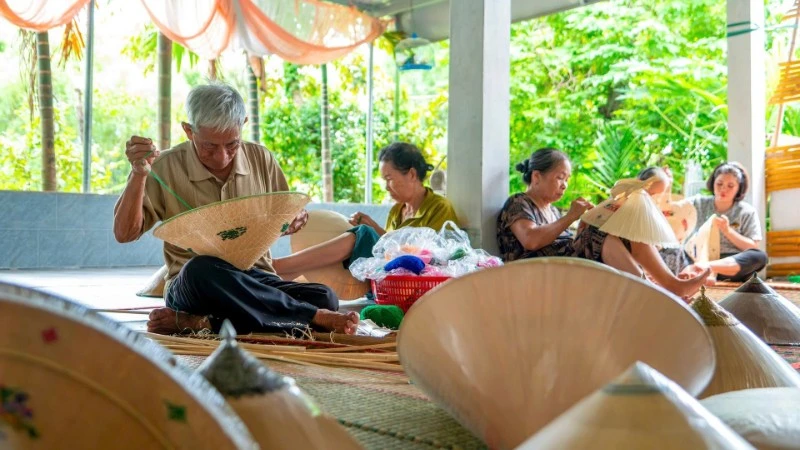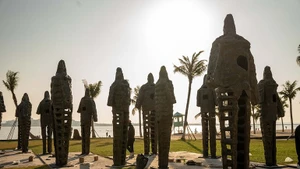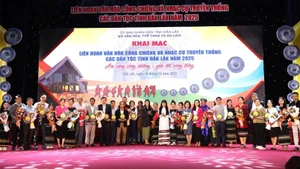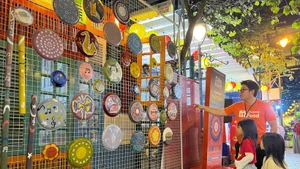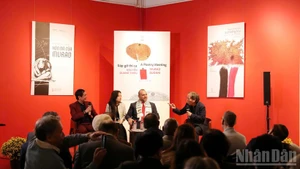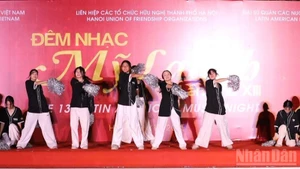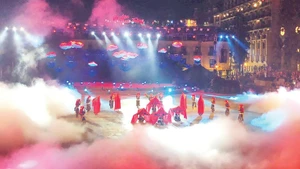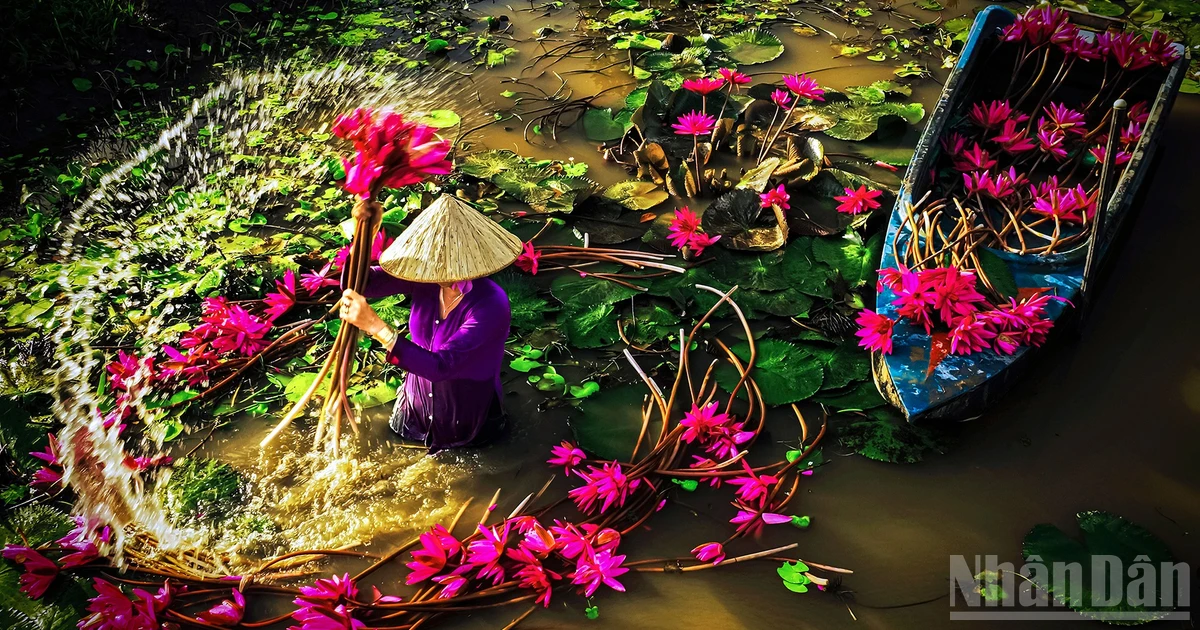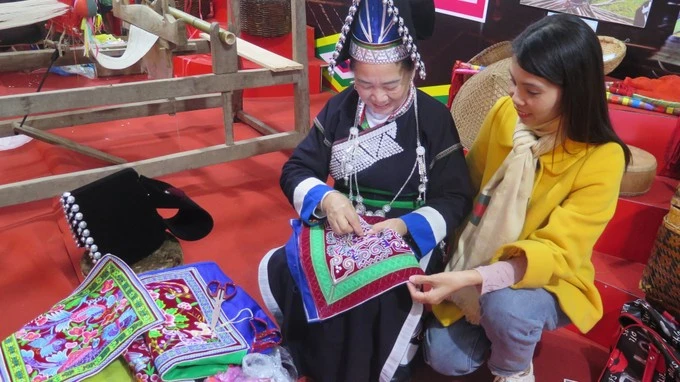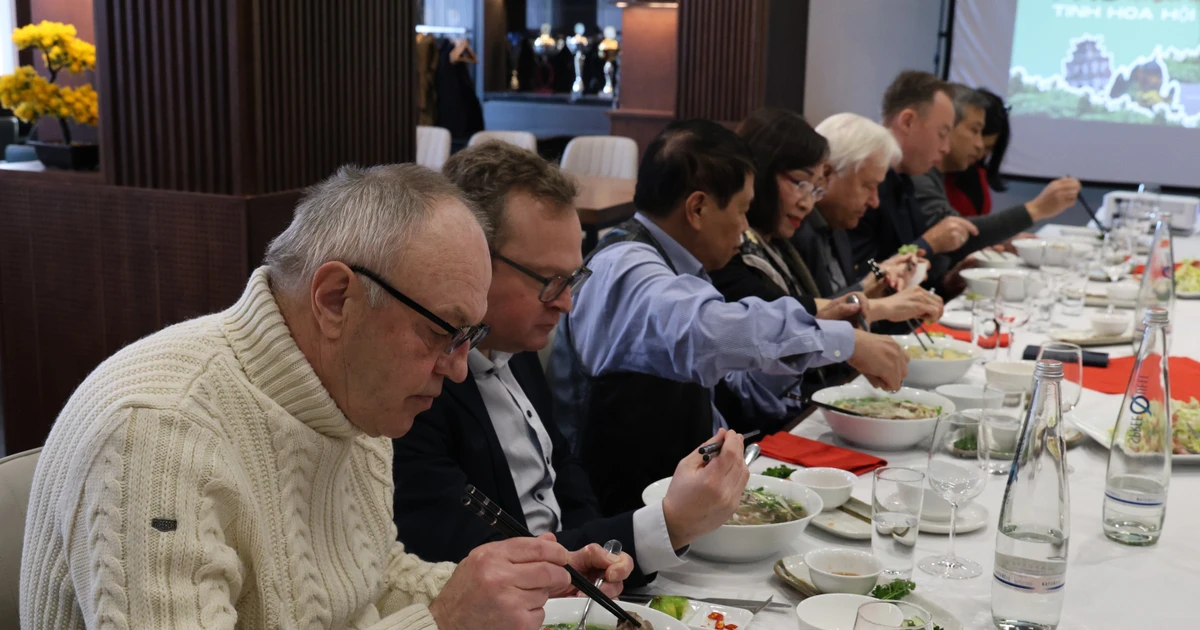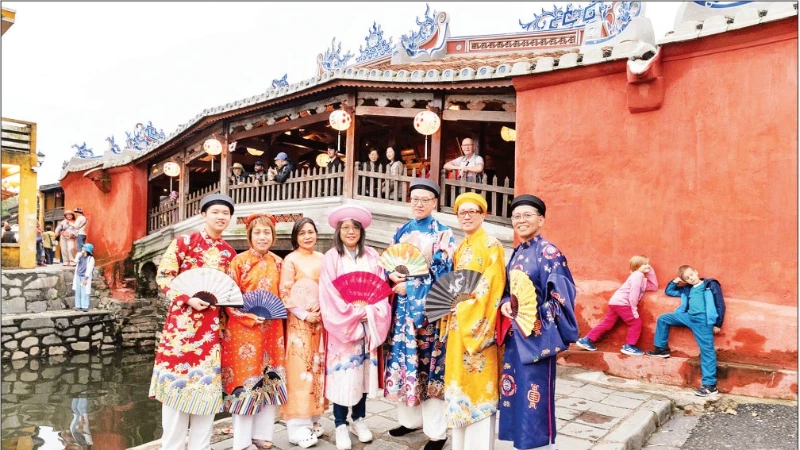For the artisans of Phu Gia Horse Conical Hat Village in Xuan An Commune, Gia Lai Province (formerly Cat Tuong Commune, Phu Cat District, Binh Dinh Province), the opportunity to continue their craft every day — creating and passing on the unique horse hats, which are a national intangible cultural heritage — is a source of great pride and joy.
Located about a 30-minute drive from Quy Nhon City, the new rural commune of Xuan An was formed through the merger of Cat Nhon Commune and Cat Tuong Commune, with a population of over 33,000. Turning from National Highway 19B onto the now concrete-paved provincial road DT365 leading into the village, one immediately feels the peaceful and refreshing atmosphere of this traditional craft community.
Ho Van Tuan, Vice Chairman of the Xuan An Commune People’s Committee, shared that Phu Gia horse hats are a long-standing and distinctive traditional handicraft of the former Binh Dinh Province. On April 9, 2024, the craft of making Phu Gia horse hats was officially recognised by the Ministry of Culture, Sports and Tourism as the fifth national intangible cultural heritage of the province, which has provided new momentum for the preservation of traditional cultural values and the distinctive identity of this craft village.
We visited the home of Meritorious Artisan Do Van Lan, 78 years old this year and the fourth-generation inheritor of a family that has produced horse hats for five generations. According to Lan, the craft has a history spanning about 260 years. Between 1955 and 1960, the village reached its peak, with around 300 households practising the craft; today, about 100 households remain engaged in the various stages of production.
“The horse hat differs from the ordinary conical hats used by farmers in that it has five overlapping layers instead of one, making it thicker, heavier, and sturdier. Even without the use of any chemicals, so long as the traditional processing steps are followed correctly, a hat can last 50 to 70 years,” Lan explained.
Across generations, families have kept one pair of their finest horse hats as heirlooms. As a result, Lan’s family now displays four pairs over 120 years old, and the “youngest” hat in the collection, passed down from his late mother, is already 75 years old. Though the colour has faded with time, the hats remain fully usable.
Phu Gia horse hats are made from palm leaves, Giang bamboo, pineapple roots, fishing line and embroidery thread. It can take three to five days to create one complete hat, or even as much as a month for complex designs. The process consists of 13 steps.
In the village, two main types of hats are produced. The simpler ones have exposed tops with colourful silk tassels resembling flowers and are priced between 40,000 and 50,000 VND each. The traditional designs are more intricate, priced from 300,000 to 500,000 VND depending on size and decorative detail.
For the more ornate horse hats, the top is fitted with a silver or tortoiseshell ornament engraved with patterns. The chin straps are made of red or blue silk ribbons with tassels beneath the chin. These hats are particularly popular with tourists for their beauty and durability.
Lan’s family now owns a collection of 18 hat tops, including eight antique and ten modern designs. Each top, weighing less than 100 grams, is screwed onto the hat using a small bolt. Today, a single copper top can cost up to 2.5 million VND. “For me, creating new designs every day that differ from those of my ancestors means each product is one of a kind. I always strive to innovate,” Lan shared.
The year 2025 has been a momentous one for him. In May, he was conferred the title of Meritorious Artisan by the state president and was also recognised as one of the outstanding individuals at the Gia Lai Provincial Patriotic Emulation Congress for the 2020–2025 period as acknowledgements of his dedication to preserving and promoting the craft of Phu Gia horse hats.
According to Nguyen Thi Kim Chung, Deputy Director of the Gia Lai Department of Culture, Sports and Tourism, under the pilot project to develop tourism at traditional craft villages in the former Binh Dinh area by 2025, the department has organised tourism training programmes for households and individuals interested in developing community-based tourism at Phu Gia Horse-Hat Village. It has also introduced signboards and tourism leaflets promoting the craft village.
“In the context of digital transformation, our department identifies the integration of craft village activities with tourism routes as a key task to enhance cultural value and increase income for local people. We are compiling information on craft village products, creating QR codes to promote them, introducing the craft online, and connecting sales channels to expand markets and develop sustainable tourism,” said Chung.
Every day, Lan and his wife, Nguyen Thi Tam, along with their collaborators, continue to keep the “flame” of the Phu Gia horse-hat craft alive. Yet, as modern life accelerates, they worry that the younger generation might abandon these traditional values. “I’m 78 now. Since the craft of Phu Gia horse hats has been recognised as national intangible cultural heritage, I hope Gia Lai Province can support funding to train 10 young people who already know the basics, so that I can personally refine their skills. From these 10 young people, at least four or five could become master artisans. This craft demands exceptional precision; without such finesse, success is impossible,” Lan said thoughtfully.
“From these 10 young people, at least four or five could become master artisans. This craft demands exceptional precision; without such finesse, success is impossible,” artisan Do Van Lan reflected.
